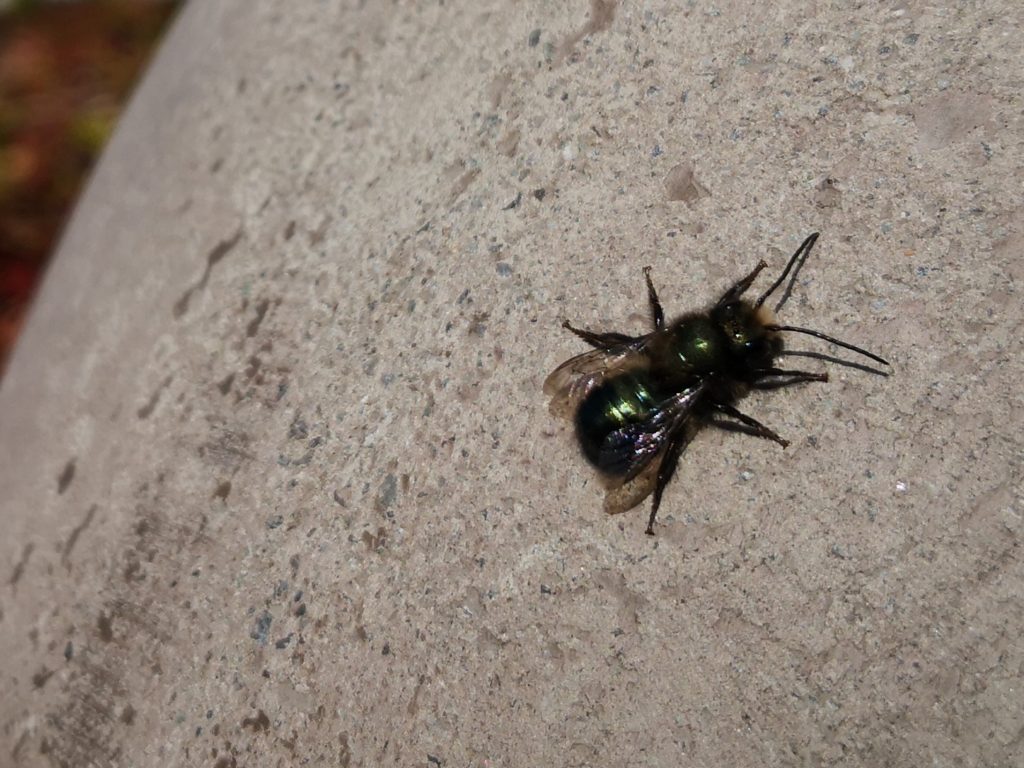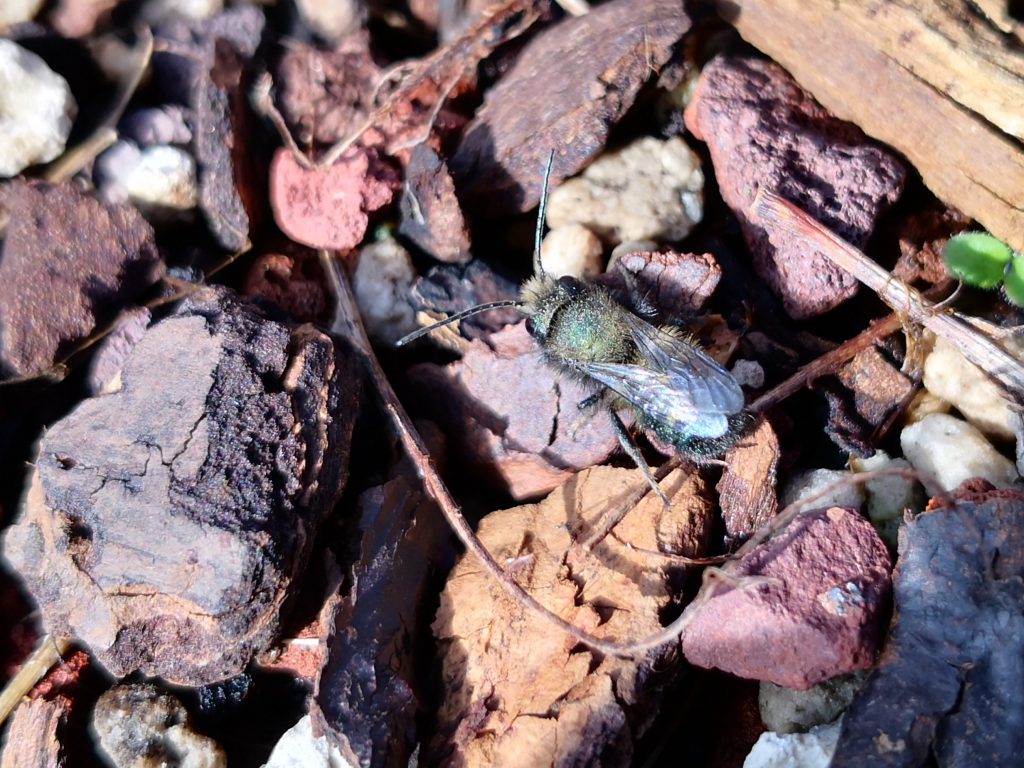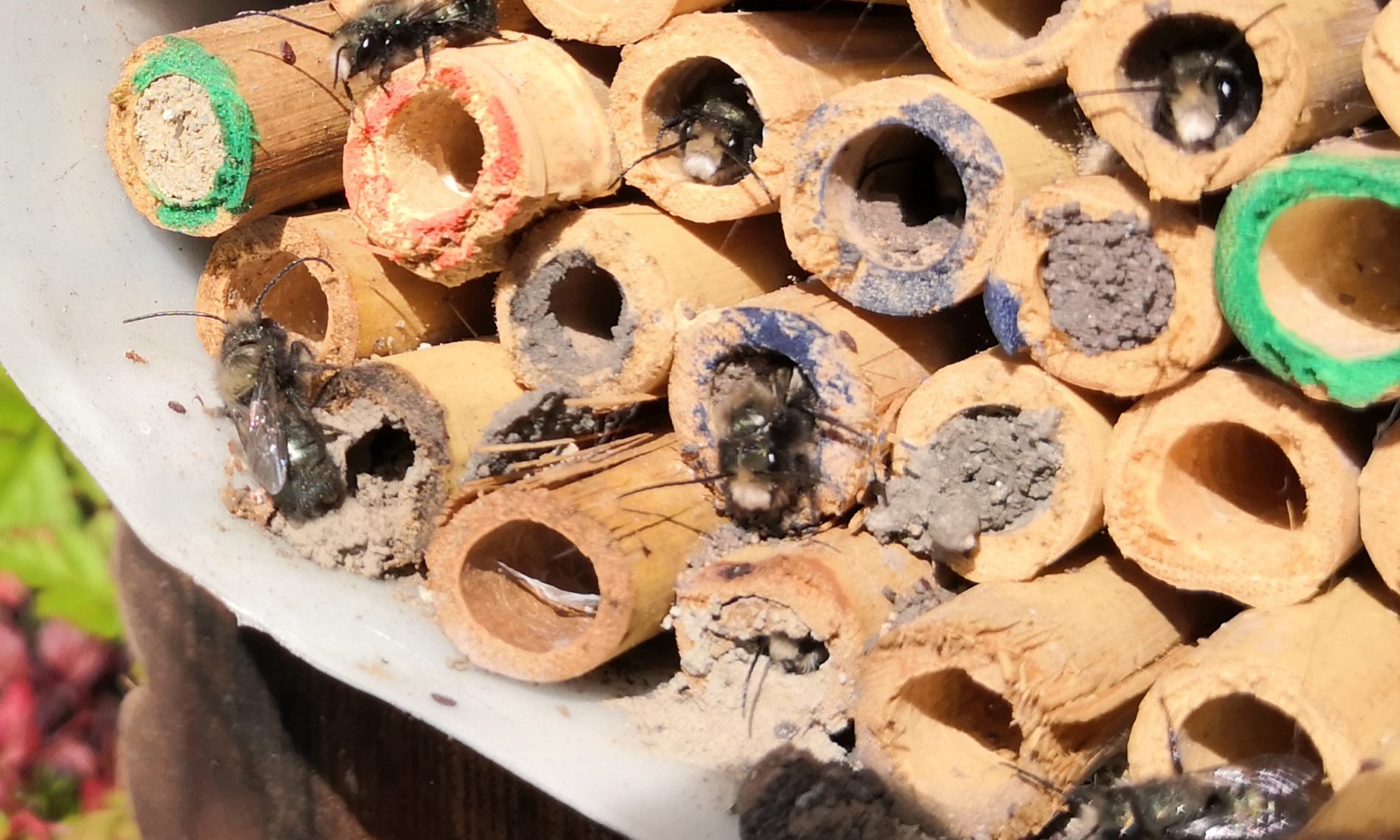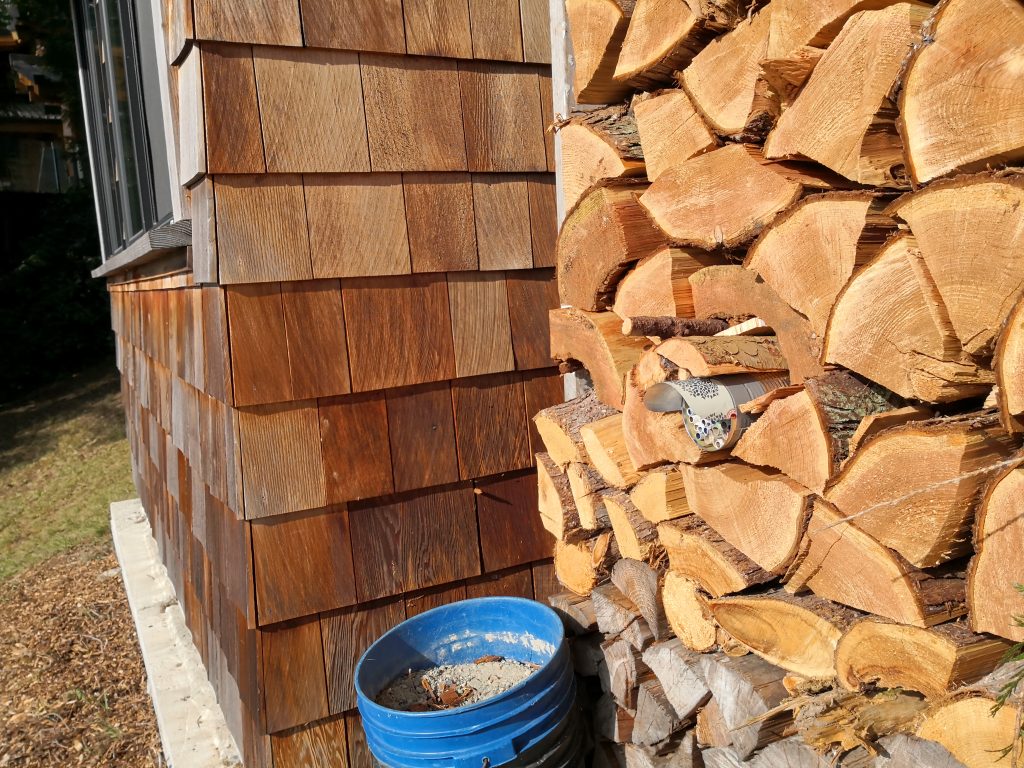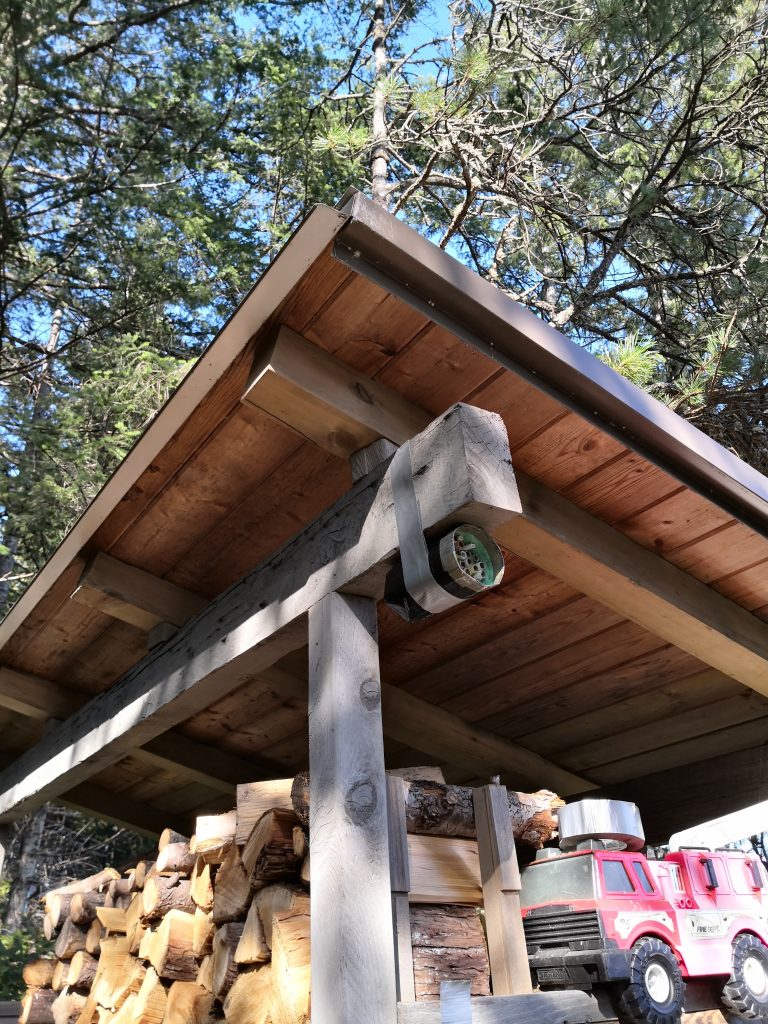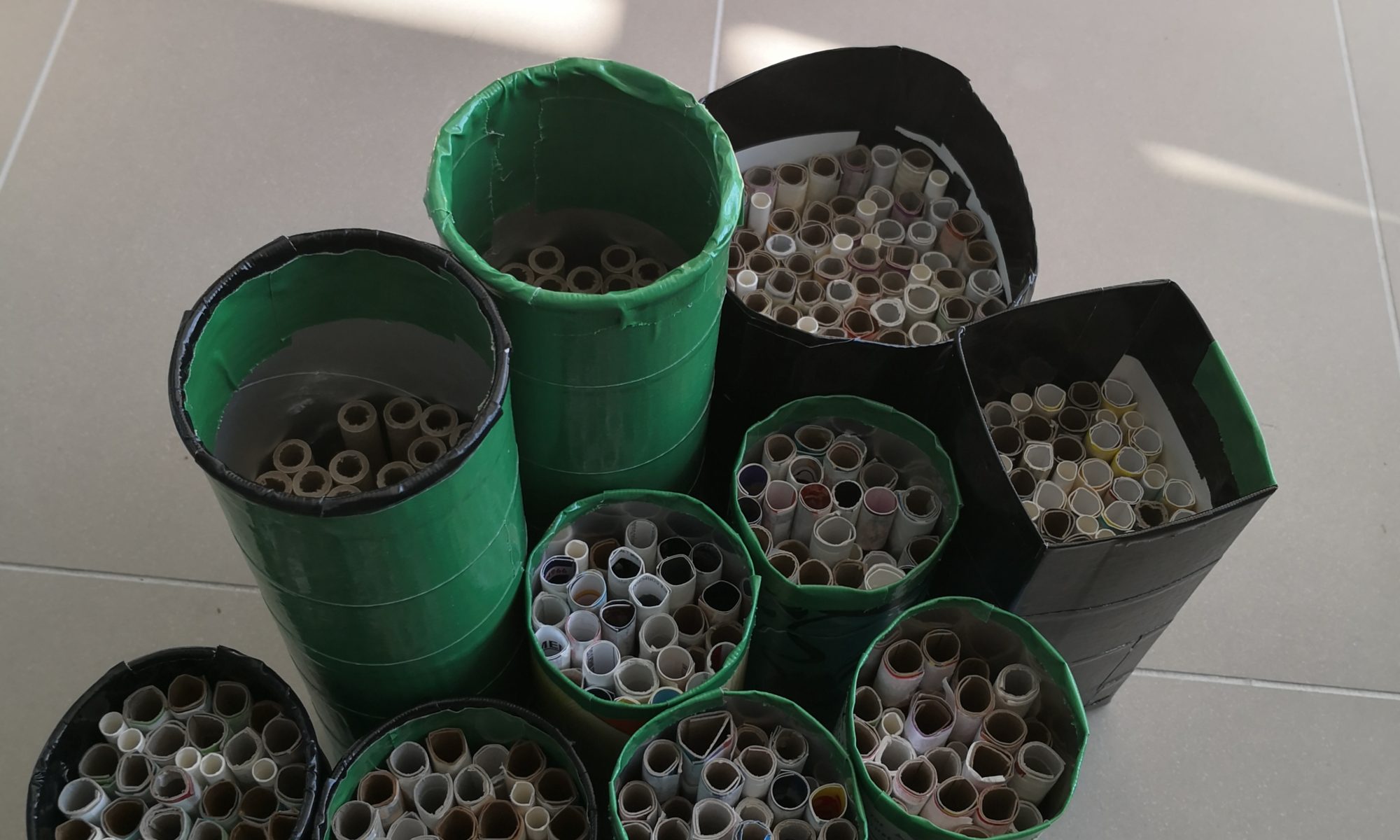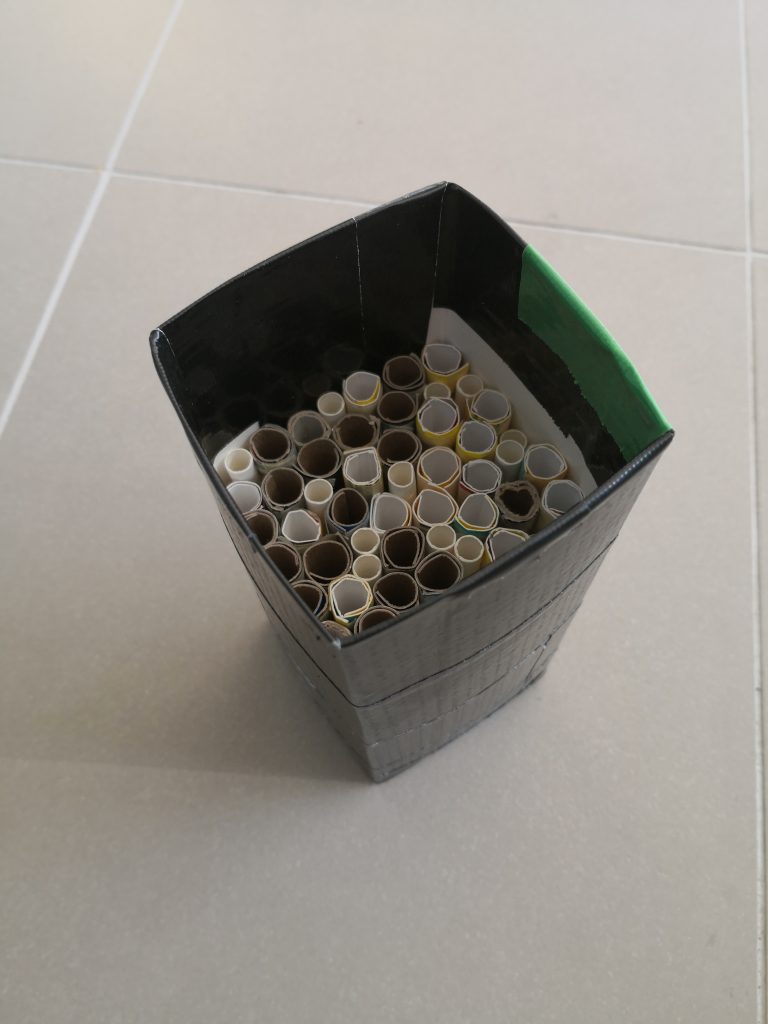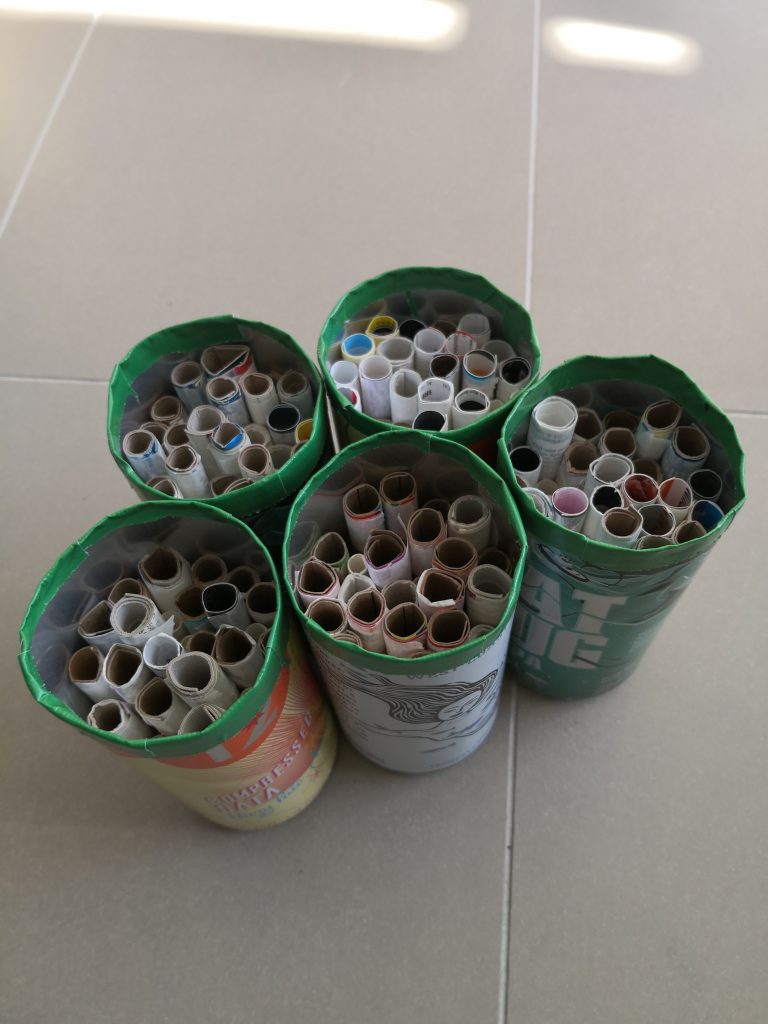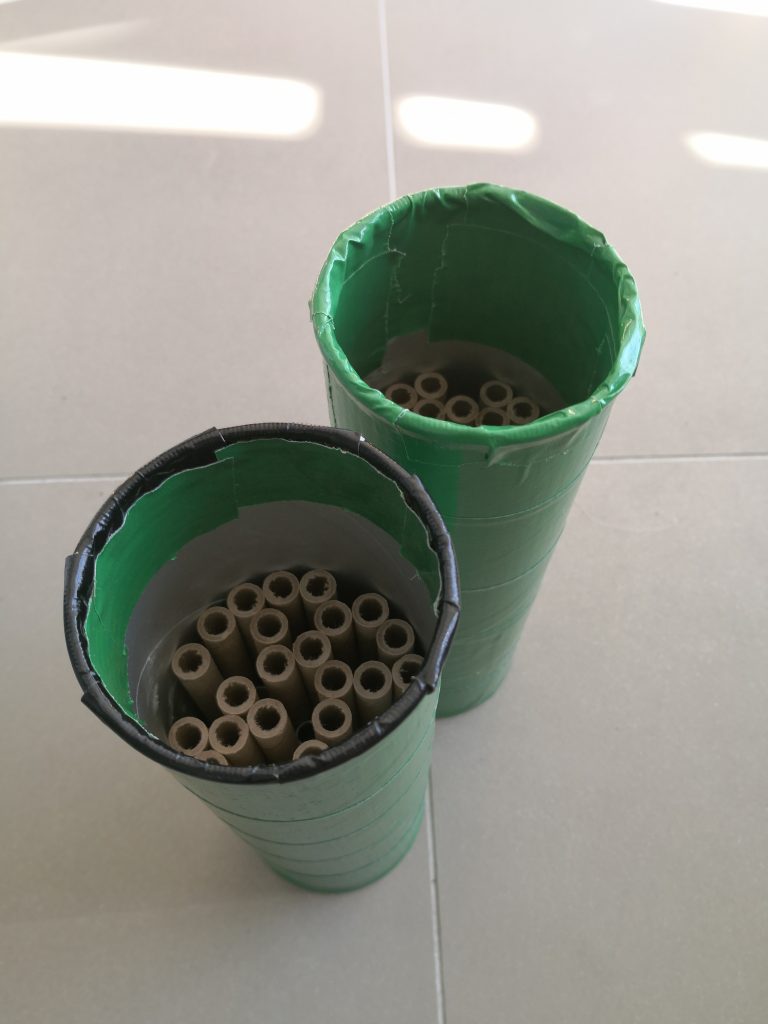As interesting as it is to see mason bees surface after a winter dormant, I was hoping they would wait another week or two as there are virtually no flowers on our roof. Crocus have left us, currants, blueberries and gooseberries all look to be about a week or two away… in fact the only flowing plant on the roof is our massive rosemary. Oh well.
It was purely by chance that I checked the bees this afternoon and noticed a few plugs opened and bees at the entrance. As I’ve mentioned previously, last year we used store-bought bee houses along with bamboo tubes. Since the tubes were nearly impossible to open, I left them in the houses and just moved them to a safe, sheltered place on a north-facing balcony. As a result, the cocoons weren’t cleaned and the temperature control was left largely to nature.
What happened? Well, I was expecting that a lot of the tubes would not emerge at all. As I said, I hadn’t cleaned them, I hadn’t controlled the temperature, they weren’t perfectly shielded from rain through the summer… but I was pleasantly surprised. Emergence happened all at once with mason bee after mason bee peeking out of their tubes and taking short hops before settling on a south-facing surface presumably to warm up.
The major issue was something I predicted in an earlier post. While all of the bees looked fat and well-fed, there were some that were absolutely plagued with mites (see the photos in this post). Others, fortunately, seemed to be completely unaffected by mites, but those that were were covered by them.
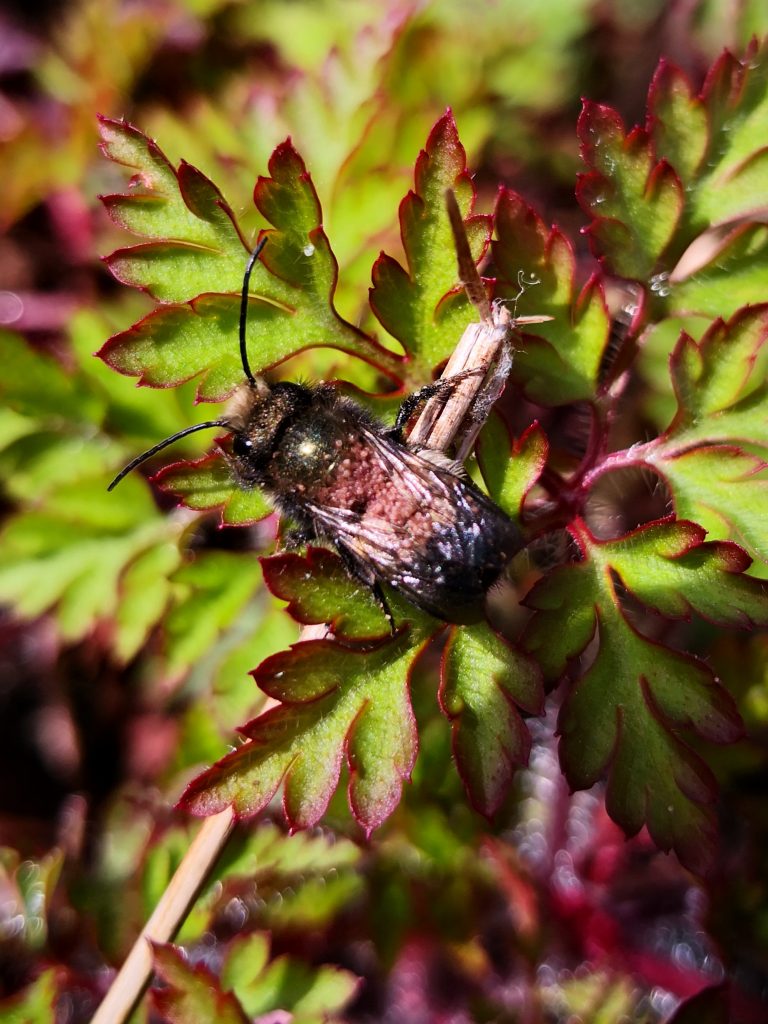
Takeaway? This year’s cardboard and paper tube (Canadians can find cardboard tubes here) test is probably warranted given the situation with mites on my mason bees. Toward summer’s end I need to remove and open the mason bee tubes, remove the cocoons and clean them before storing them in the fridge (or other suitable location) until next spring. Hopefully, IF the bees choose to use the paper tubes, and IF the babies survive to form cocoons, and IF I remove and clean them properly we should have a healthy population come next spring.
